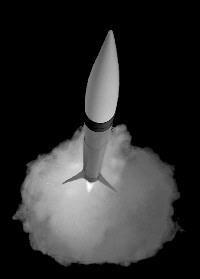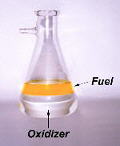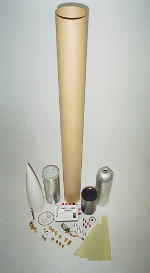
|
Dear Customer, Systeme Solaire has continued to work on the research, design and development of re-usable rocket engines for consumer and aerospace rocketry. Our company philosophy revolves around a commitment to constantly upgrade and improve our products with more lightweight materials and weight saving designs. When the SS67B-1 was completed in 1994, our goal was to begin improving it. We wanted a version that was lighter, more powerful, more versatile, less costly, and easier to launch and recover. Our efforts led to the development of the SS67B-2, and now, the SS67B-3! The SS67B-3 has several improvements over previous versions. The kit includes a separate casing for increased flight stability, lower engine weight, increased performance, fewer parts (oxidizer tank and fuel tank have been incorporated into one assembly) and is easier to fuel and assemble.
|




